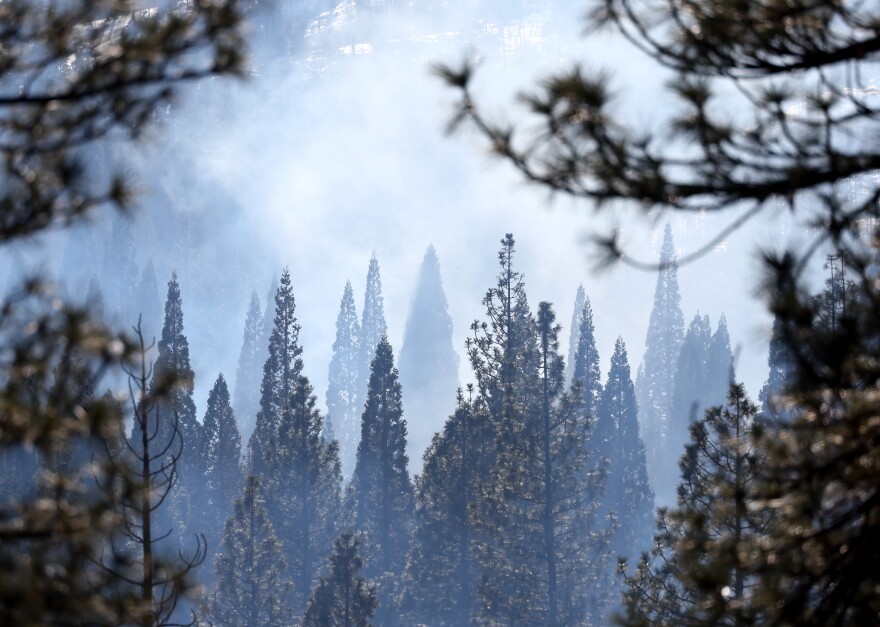This story is free to read because readers choose to support LAist. If you find value in independent local reporting, make a donation to power our newsroom today.
Climate Is Changing Too Quickly For The Sierra Nevada's 'Zombie Forests'

Some of the tall, stately trees that have grown up in California's Sierra Nevada are no longer compatible with the climate they live in, new research has shown.
Hotter, drier conditions driven by climate change in the mountain range have made certain regions once hospitable to conifers — such as sequoia, ponderosa pine and Douglas fir — an environmental mismatch for the cone-bearing trees.
"They were exactly where we expected them to be, kind of along the lower-elevation, warmer and drier edges of the conifer forests in the Sierras," Avery Hill, who worked on the study as a graduate student at Stanford University, told NPR.
Although there are conifers in those areas now, Hill and other researchers suggested that as the trees die out, they'll be replaced with other types of vegetation better suited to the environmental conditions.
The team estimated that about 20% of all Sierra Nevada conifer trees in California are no longer compatible with the climate around them and are in danger of disappearing. They dubbed these trees "zombie forests."
The environment is changing faster than the trees can adapt
The team scrutinized vegetation data dating back to the 1930s, when all Sierra Nevada conifers were growing in appropriate climate conditions. Now, four out of five do.
That change is largely due to higher temperatures and less rainfall in these lower-elevation areas, as well as human activities, such as logging, and an uptick in wildfires.
The Sierra Nevada conifers aren't standing still. The average elevation of the trees has increased over the past 90 years, moving 112 feet upslope. According to Hill, that's because lower-elevation conifers have died while conifers at higher elevations where the air is cooler have been able to grow.
But the conifers' uphill trek hasn't been able to keep pace with the dramatic increase in temperatures.
The researchers said the number of Sierra Nevada conifers incompatible with their environments could double in the next 77 years.
The new maps can inform forest conservation and management plans
But Hill, who is now a postdoctoral researcher at the California Academy of Sciences, hopes that the maps he and his colleagues developed showing the state's "zombie forests" will help shape people's understanding of the effects of climate change.
"Conservationists know, scientists know, so many people know that ecosystems are changing and expect them to change more, and people are grappling with this," he said.
"These maps are unique, in that you can put your finger on a point and say, 'This area right here is expected to transition due to climate change in the near future,' and this forces some really difficult questions about what we want this land managed for and do we try to resist these impending changes," Hill added.
Copyright 2024 NPR. To see more, visit npr.org.







